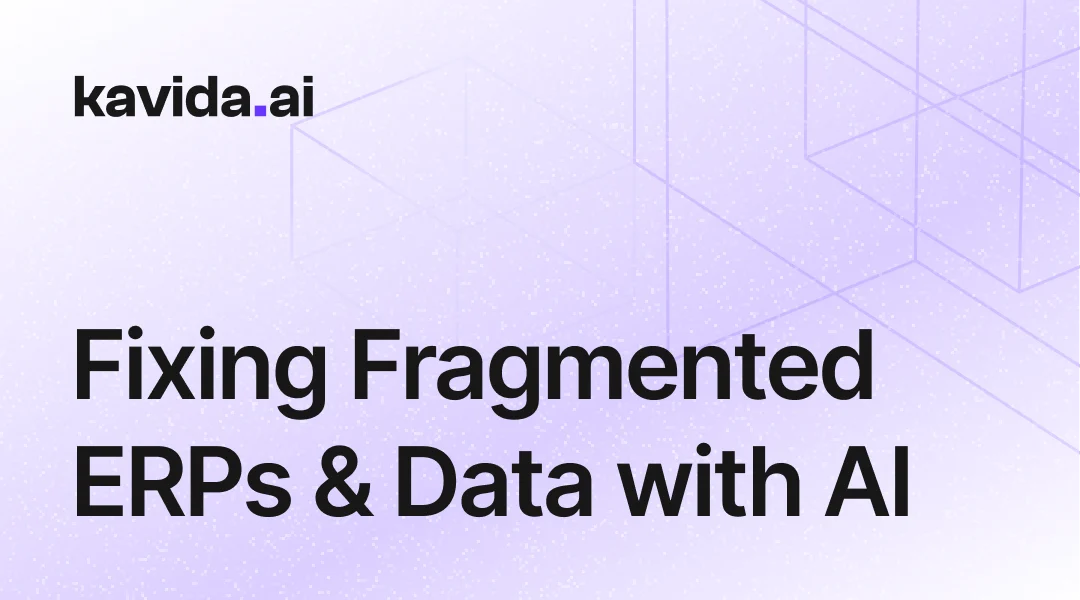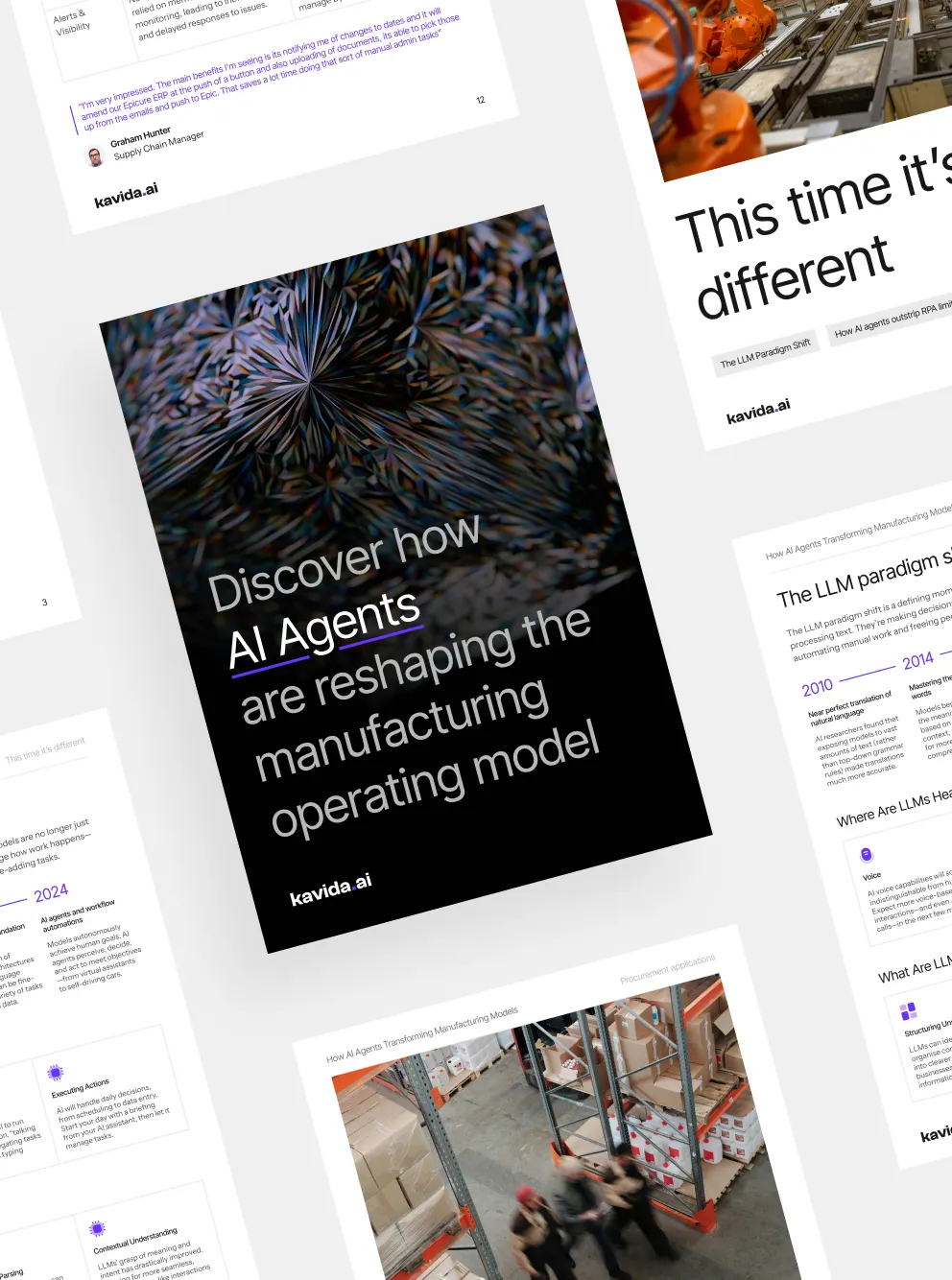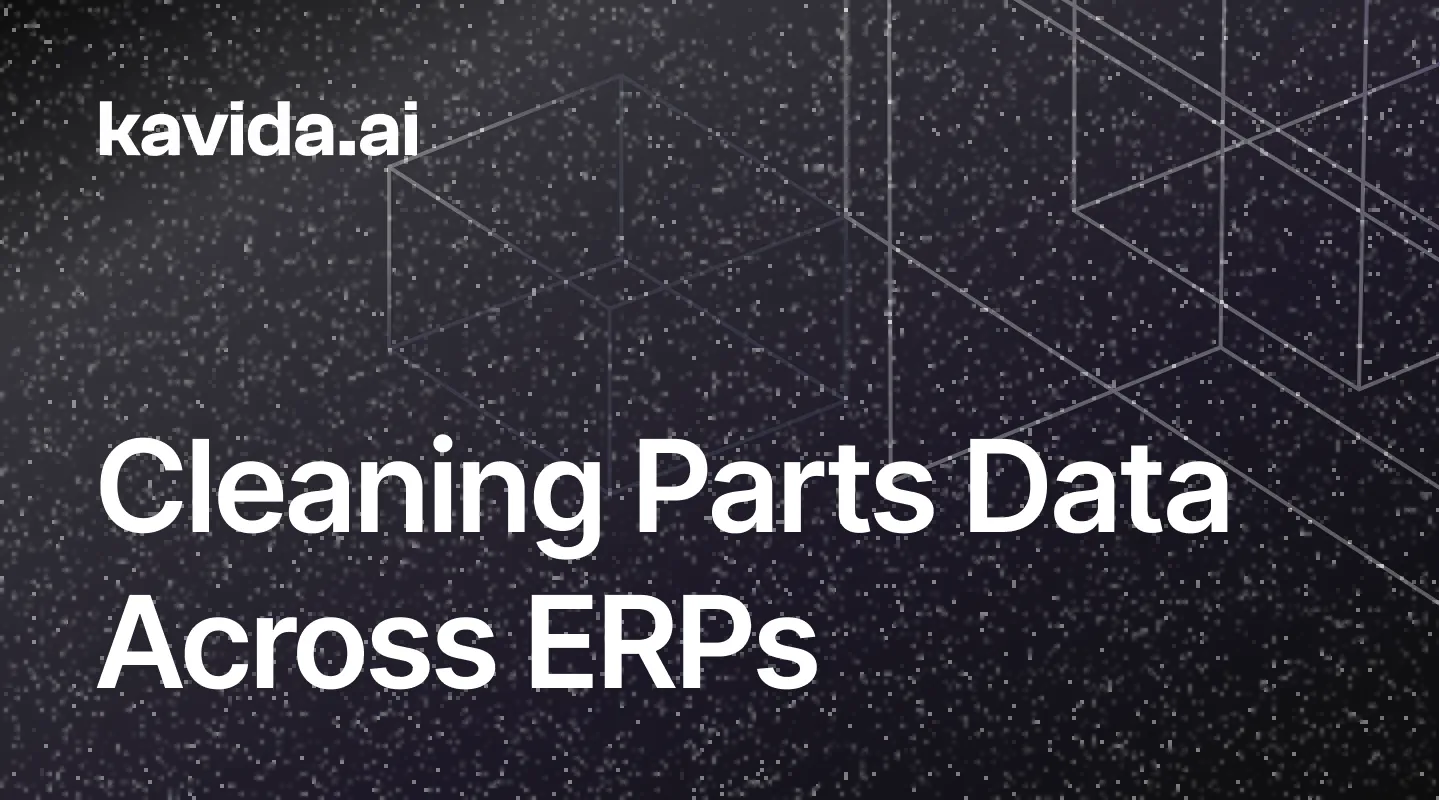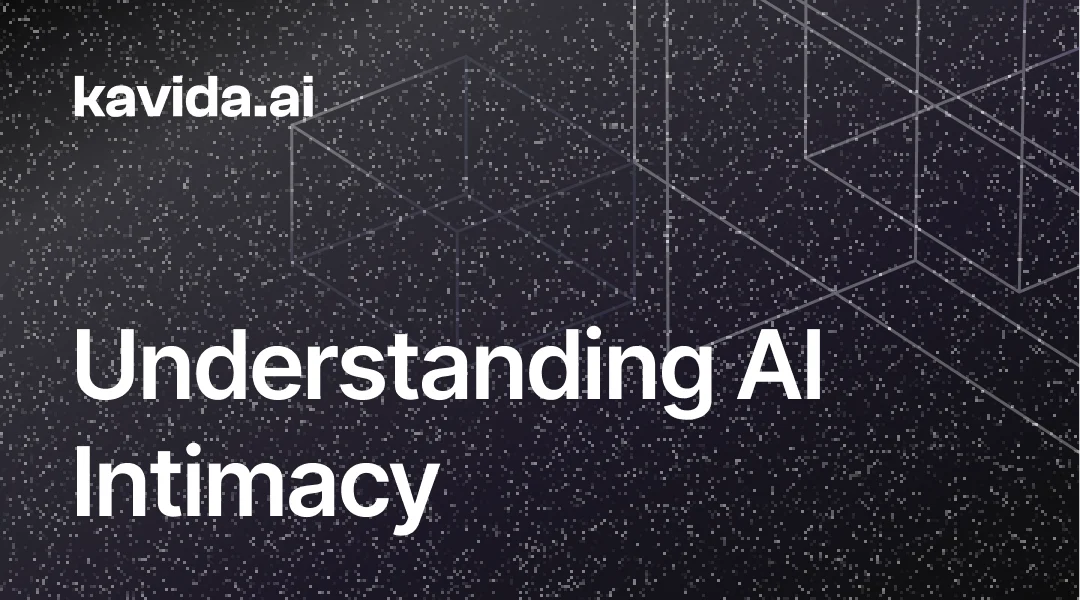

Discover how AI agents are reshaping the manufacturing operating model

Hi, I’m Alison!
Share your details, and I’ll give you a call in minutes to see how we can assist.

The Ultimate Guide to Procuring Generative AI for Your Manufacturing Company
Table of Contents
ToggleIn the rapidly changing world of technology, From the first assembly lines to the robotics revolution, the manufacturing industry continually strives to find new ways to boost productivity and increase efficiency. Today, major trends are driving the need for further digital transformation, and generative AI is helping pave that path forward.
Why it matters : Factors like supply chain disruptions have wreaked havoc on bottom lines, with 45% of the average company’s yearly earnings expected to be lost over the next decade. Closer to home, companies are struggling to fill critical labor gaps, with over half (54%) of manufacturers facing worker shortages.
Challenges like these demand new solutions. By enhancing manufacturing processes, generative AI can reduce downtime, improve output, realize cost savings, and boost customer satisfaction through on time deliveries. 82% of organizations are considering or currently using generative AI believe it will either significantly change or transform their industry (Google Cloud Gen AI Benchmarking Study, July 2023).
This guide is here to walk you through the process, helping you answer the ten most critical questions you need to address to make smart, informed decisions about AI for supply chain and procurement.
Step 1: Define Your Use Case
Identify Business Problems Generative AI Can Solve
The first step in procuring generative AI is understanding the specific business problems it can solve within your organization. Generative AI is highly versatile and can be applied to automated workflows and decision intelligence for querying multiple data streams across inventory, purchasing, and sales, enabling faster strategic decisions and streamlined operations.
Ask yourself:
- How can generative AI help automate workflows and enhance decision intelligence across my manufacturing company?
- Who are the primary users or beneficiaries of this AI solution?
For instance, if your organization struggles with making timely decisions due to siloed data streams, generative AI can help integrate and analyze data from inventory, purchasing, and sales to provide actionable insights for strategic decision-making.
A few examples of such use cases are as follows;
| Department | Gen AI Use Cases | Use Case Description |
|---|---|---|
| Procurement | Order Confirmations | Automate supplier follow-ups for order confirmations. |
| Order Revisions | Track purchase order changes and automate alerts for seamless communication. | |
| Sourcing Cost Reduction | Gain visibility into sourcing costs and identify cost-saving opportunities. | |
| Material Certificate Due | Automate reminders and follow-ups for material certifications. | |
| Inventory | Stock-Out Risk | Predict and mitigate stock-out risks using real-time alerts. |
| Automated Order Replenishment | Automate restocking orders to ensure inventory levels remain optimal. | |
| Production | Work Order Risk | Identify work order-related risks early to minimize disruptions. |
| Job Shop Visibility | Improve transparency of job shop operations to ensure production efficiency. | |
| Inbound Planning | Optimize inbound material flow to avoid production delays. | |
| Finance | 3-Way Matching | Automate invoice matching with purchase orders and receipts to streamline financial accuracy. |
| Payment Forecasting | Predict payment schedules to improve cash flow management. | |
| Working Capital Reduction | Optimize working capital by managing procurement and payments more efficiently. | |
| Sales | Customer Order Risk Alerts | Get proactive alerts for orders at risk of delay or cancellation. |
| Forecast Accuracy | Improve sales forecast accuracy with data-driven insights. |
Curious about Gen AI use cases for manufacturers?
Agent PO offers autonomous agents for automated workflows and decision intelligence.

Step 2: Define the Value and Impact – Quantify Expected Benefits
Once you’ve determined that generative AI is the right solution, it’s crucial to quantify the value it will bring across departments such as production, procurement, finance, and sales. Automated workflows and decision intelligence solutions can significantly enhance decision-making by integrating multiple data modules across such departments, leading to faster strategic decisions and streamlined operations. This helps justify the investment and secure buy-in from key stakeholders.
Ask yourself:
- What value will generative AI bring to our manufacturing operations across inventory, procurement, finance, and sales?
- How will we measure this value (e.g., efficiency gains, cost savings, customer satisfaction, reduced delays)?
For example, if implementing generative AI reduces procurement delays by 40%, what is the resulting cost saving? Establishing clear metrics allows you to evaluate success and demonstrate the value of your AI initiative.
Supply Chain Impact
| Metric | Expected Benefits | Example |
|---|---|---|
| Forecast Accuracy | 15% increase | Reduces excess inventory and stockouts |
| Lead Time Reduction | 20% decrease | Enables faster order fulfillment |
| Risk Prediction | 10% fewer disruptions | Proactive risk management minimizes stockouts |
Procurement Impact
| Metric | Expected Benefits | Example |
|---|---|---|
| Cost Savings | 12% reduction | Lower procurement costs by optimizing supplier choices |
| Supplier Lead Time Performance | 15% improvement | Improved on-time delivery from suppliers |
| Process Automation | 30% reduction in cycle times | Automated order management processes |
Production Planning Impact
| Metric | Expected Benefits | Example |
|---|---|---|
| Production Scheduling | 20% reduction in downtime | Aligned production with demand forecasts |
| Changeover Times | 15% faster product changeovers | Increased production throughput |
| Production Delays | 10% fewer delays | Better coordination leads to fewer production halts |
Supplier Collaboration Impact
| Metric | Expected Benefits | Example |
|---|---|---|
| Supplier Communication | 25% reduction in response time | Faster coordination on critical orders |
| Risk Management | 10% fewer disruptions | Proactive management of supplier risks |
| Supplier Evaluation | 15% improvement in reliability | Increased on-time supplier deliveries |
Inventory Management Impact
| Metric | Expected Benefits | Example |
|---|---|---|
| Holding Cost Reduction | 18% decrease | Optimized stock levels reduce carrying costs |
| Stockout Reduction | 20% fewer stockouts | Ensures consistent product availability |
| Excess Inventory | 12% reduction | Frees up working capital |
Reduce excess
inventory by 12%
Agent PO’s decision intelligence let’s manufacture integrate inventory data for
faster, smarter decisions.

Step 3: Assess Data Readiness – Evaluate the Quality and Availability of Data
Data is the lifeblood of AI. Generative AI models require vast amounts of high-quality data to function effectively. Therefore, assessing data readiness is an essential step in the procurement process.
Consider these questions:
- Is the data required for AI implementation available?
- Have we assessed its quality, completeness, and readiness?
Manufacturing data can come from many sources, including production line sensors, quality inspection logs, and inventory systems. It is essential to determine if your data is readily accessible and if it meets the quality standards needed for AI training. Conduct a data readiness assessment to identify gaps and areas that require improvement.
Data Readiness Assessment Chart
| Metric | Expected Benefits | Example |
|---|---|---|
| Holding Cost Reduction | 18% decrease | Optimized stock levels reduce carrying costs |
| Stockout Reduction | 20% fewer stockouts | Ensures consistent product availability |
| Excess Inventory | 12% reduction | Frees up working capital |
Step 4: Make vs. Buy Decision – Determine the Best Procurement Approach
One of the most critical decisions in procuring Generative AI is whether to build the solution in-house or buy it from an external vendor. Both approaches have their pros and cons.
Ask yourself:
- Should we develop the AI solution internally or procure it externally (make vs. buy)?
- Do we have the technical expertise in-house, or would an external vendor be more effective?
Building in-house offers greater customization and control but requires technical expertise and resources. On the other hand, procuring from a vendor can accelerate deployment, especially if the vendor has specialized knowledge in manufacturing use cases. Evaluate both options based on cost, time, and the complexity of the problem.
Step 5: Conduct Risk Assessment – Understand and Mitigate Potential Risks
With AI, risks can range from data privacy concerns to implementation challenges. Conducting a thorough risk assessment helps in identifying and mitigating these risks before they become issues.
Questions to guide this step:
- What are the key risks associated with implementing Generative AI?
- How can we mitigate these risks, especially regarding data privacy and operational continuity?
- Compliance requirements such as GDPR, CCPA, SOC 2, Cyber Essentials, and ISO 27001.
For manufacturing firms, risks could include the potential for data breaches, operational disruptions, or unintended outcomes due to inaccurate AI predictions. Establish a risk management framework that includes risk identification, assessment, mitigation strategies, and ongoing monitoring.
Step 6: Identify Business Ownership and Secure Sponsorship
Successful AI projects require a dedicated business owner and sponsor to drive the initiative and ensure alignment with business objectives. Identifying the right stakeholders early on is key to securing buy-in and maintaining momentum.
Ask yourself:
- Who will own and sponsor the Generative AI project within the organization?
- How will they ensure alignment with business objectives?
The business owner should be someone with a deep understanding of the problem and the authority to make decisions. The sponsor should be a senior leader who can champion the project and help overcome obstacles.
Step 7: Define Proof of Value (PoV) and Evaluate ROI
Before full-scale implementation, it’s advisable to run a Proof of Value (PoV) to validate the AI solution. This will help you determine if the AI solution meets the expected business outcomes and is worth scaling.
Key questions to consider:
- How will we evaluate the success of the Generative AI solution?
- What metrics will be used to evaluate the ROI (e.g., cost savings, productivity gains)?
The PoV should be a controlled deployment in a real-world setting to validate the AI solution’s performance. This phase will help refine the model and provide a clearer picture of the potential return on investment.
Proof of Value (PoV) Evaluation Chart
| Metric | Expected Benefits | Example |
|---|---|---|
| Holding Cost Reduction | 18% decrease | Optimized stock levels reduce carrying costs |
| Stockout Reduction | 20% fewer stockouts | Ensures consistent product availability |
| Excess Inventory | 12% reduction | Frees up working capital |
Don't know how to measure POV and ROI from a Gen AI program?
Get in touch with our team to learn how you can test proof of value use cases with sample data, before full scale deployment.

Step 8: Vendor Selection – Identify and Evaluate External Partners
If you decide to procure Generative AI from a vendor, selecting the right partner is crucial. Evaluate vendors based on their experience, expertise, and track record with similar projects.
Consider the following questions:
- Which vendors have the relevant experience in manufacturing AI solutions?
- What criteria should we use to evaluate vendors (e.g., expertise, scalability, support services)?
It’s important to choose a vendor who understands the manufacturing industry and has the capability to deliver a tailored solution. Evaluate factors such as the vendor’s technical expertise, pricing model, after-sales support, and alignment with your company’s needs.
Step 9: Plan for Scalability and Long-Term Integration
Finally, when procuring Generative AI, it’s essential to consider how the solution will scale and integrate with your existing systems. A successful PoV is just the beginning—long-term success depends on proper integration and scalability.
Key questions include:
- How scalable is the AI solution?
- Can it be applied to multiple use cases or departments within a short timeframe?
Manufacturing firms often operate across multiple facilities and regions. Ensure that the AI solution you procure can be scaled across different plants or departments and can integrate seamlessly with your existing tools and systems.
Setting Your Manufacturing Firm Up for Success with Generative AI
Procuring Generative AI for your manufacturing company is a significant investment that can yield substantial benefits if done correctly. By following this step-by-step guide—from defining your use case and assessing data readiness to conducting a risk assessment and running a PoV—you can set your organization up for success.
The manufacturing industry is poised for transformation, and Generative AI is a key enabler of this change. The key to successful AI adoption lies in thorough preparation, careful assessment, and thoughtful procurement. Start by identifying the areas where AI can make the most impact, ensure that you have the right data, and consider the make vs. buy decision based on your organization’s capabilities.
By addressing these ten steps comprehensively, you can make an informed decision that maximizes value while minimizing risks, ultimately driving your manufacturing firm toward greater efficiency, productivity, and competitive advantage.
The Ultimate Guide to Procuring Generative AI for Your Manufacturing Company
Table of Contents
ToggleRelated articles

The ERP Migration Myth: How Agentic AI Unblocks Value Across Fragmented Systems
Procurement leaders today need more than just efficient workflows—they need insights that drive smart decision-making. For decision makers...

Cleaning and Consolidating Parts Data Across ERPs with AI Agents
Procurement leaders today need more than just efficient workflows—they need insights that drive smart decision-making. For decision makers...

AI Intimacy: How Supply Chain Agents Adapt to You
Procurement leaders today need more than just efficient workflows—they need insights that drive smart decision-making. For decision makers...

